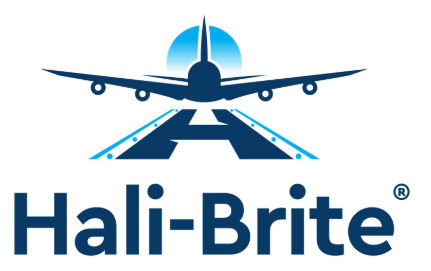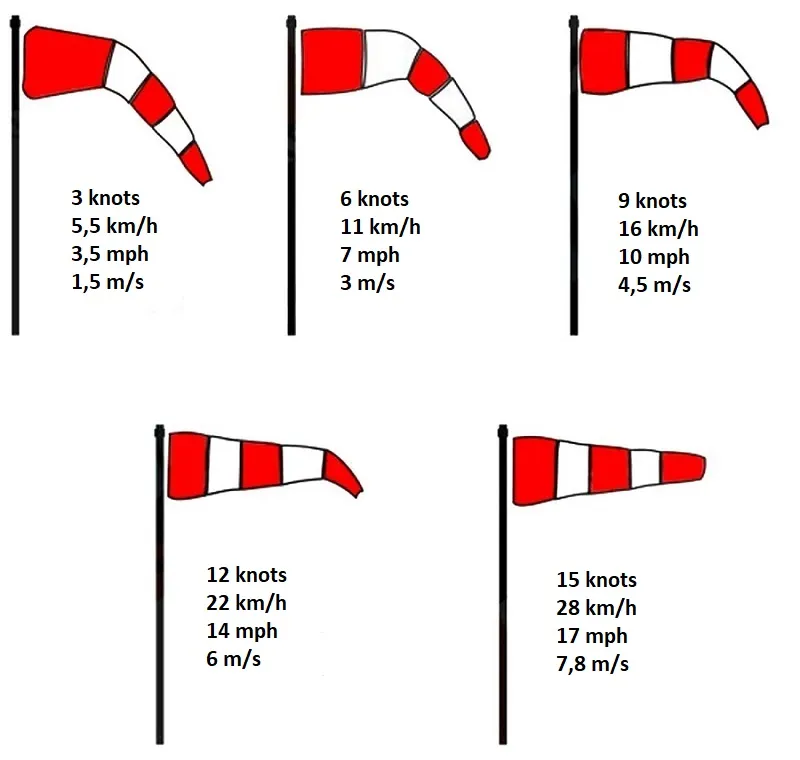Knowing the direction of the wind is unquestionably vital for a pilot. This information is provided by Air Trafic Control (ATC) at facilities that have an operating control tower. Pilots can also obtain similar information by requesting information on a Common Traffic Advisory Frequency (CTAF) at airports with the capability to receive and broadcast on that frequency.
However, visual wind indicators can be used to identify wind direction when none of these services are available. Even though the information is presented on the CTAF for a specific airport, a pilot should make use of these wind indicators because the weather is constantly changing and there is no guarantee that the information is always 100% up to date.
Where Are Wind Direction Indicators Located?
A wind cone, windsock, tetrahedron, and landing tee are all examples of wind direction indicators. These wind indicators are typically situated near the runway in a central area and might be in the middle of a segmented circle that indicates the traffic pattern direction if it is not the standard left-hand pattern.
Types of Wind Direction Indicators:
1. Wind Socks
Windsock displays wind direction and speed as the wind travels through the bigger aperture to its smaller end. There is a calm wind if the windsock is hanging limp. The higher the indicated wind speed, the more straight out the windsock is extended.
In addition, the size of the large and small openings in windsocks differs. This means that with 15 knots of wind, one windsock may fly straight out, while another may bend halfway down its length.
2. Tetrahedron Wind Indicator
A tetrahedron is a wind direction indicator that indicates which direction the wind is coming from. However, wind speed isn’t indicated by tetrahedrons.
It’s also vital to know that a tetrahedron works/indicates in the opposite direction of a windsock, so don’t get the two confused. A windsock is inflated by the wind and points in the same direction as the wind, but a tetrahedron points in the opposite direction.
3. Landing Tee
A landing tee is erected at certain airports to indicate wind direction but not speed. When facing into the wind, the wind tee swings with the wind, making the letter “T” readable.
How Are Segmented Circles Related to Wind Indicators?
A segmented circle is used at some airports to provide pilots with information about wind and traffic pattern procedures. To form a segmented circle, a wind direction indicator, such as a tetrahedron, is surrounded by traffic pattern indicators.
When viewed from above, the base and final legs of the traffic pattern are visually depicted by these traffic pattern signs, which align with the appropriate runway.
How to Install a Wind Direction Indicator
As stated earlier, a windsock is an example of a wind direction indicator. While there are other wind indicators, we are going to discuss the installation of a windsock. Let’s begin!
Wind Sock Installation
Step 1
Begin by constructing a sturdy base for your windsock. This requires professional installation, which begins with digging a deep enough hole for the pole anchor. Once the anchor assembly is complete, place it in the hole and secure it with the proper support rods before pouring concrete into the hole. Hire a contractor to handle this stage to ensure compliance with local regulations.
Step 2
The next step is to attach a windsock pole on top of your anchor once the bolts on top have been leveled and the concrete has cured. Carefully hoist the pole onto the anchor with the help of three people and tighten the screws. Crank the upper half of the pole into a lower, attainable position to make the next steps more comfortable because Hali-Brite windsock poles are jointed in the middle.
Step 3
Next, you screw the basket into the top of the pole. If your windsock comes with lights, however, carefully follow the directions for feeding electrical cable down through the pole before attaching your lights.
When everything is finished, connect the wiring to a power source (using Hali-power Brite’s source recommendations or hiring an electrician if needed).
Step 4
This is the final step. After you’ve assembled the pole, slide the windsock over the basket and secure it using cable straps. Finally, reposition the pole and fasten it with bolts and nuts. With this step completed, you have successfully installed a windsock.
How to Read a Wind Direction Indicator
1. Reading a Wind Cones
According to FAA specifications, when the wind speed reaches three knots (3.5 mph), windsocks must orient themselves to point in the direction the wind going. In other words, if the small pointy end of the windsock is extending to the northeast, the wind is coming from the southwest. At 3.5 mph, the wind sock may not be extended at all, but it will orient so the large opening is facing the wind, and the small end points in the direction the wind is heading.
2. Reading a Tetrahedron Wind Indicator
A Tetrahedron Wind Indicator functions in the exact opposite manner of a wind cone. The small point of the tetrahedron points into the wind. This is because the pointed end of the tetrahedron is more aerodynamic. If the small point of a tetrahedron is pointing northeast, then the wind is coming from the northeast and heading southwest.
3. Reading a Landing Tee
In terms of physical appearance, a Landing Tee is large and bulky, similar to a Tetrahedron. Despite appearances, the Landing Tee functions like a Wind Cone. The top of the “T” faces into the wind, as a plane would want to do when landing. The bottom of the “T” points in the direction the wind is going. If the top of the “T” is facing northeast then the wind is coming from the northeast and heading southwest
How to Approximate Wind Speed from a Wind Cone
When the wind speed reaches three knots (3.5 mph), windsocks are made to orient themselves against the wind. Only the first segment of the windsock will be extended at that speed. This simply means that if the windsock is extending to the northeast, the wind is coming from the southwest.
When the wind speed reaches six knots, the second segment of the sock extends; when the wind speed reaches nine knots, the third segment extends; and when the wind speed reaches twelve knots, the fourth segment extends. Consequently, when the wind speed hits 15 knots (17 mph), the windsock will be fully expanded and facing away from the source of the wind.
- Section 1: 3 Knots, According to FAA regulations, the wind cone must orient itself to face into the wind at 3 knots.
- Section 2: 6 knots
- Section 3: 9 knots
- Section 4: 12 knots
- Section 5: 15 knots, According to FAA regulations, at 15 knots (17 mph) the wind cone should be fully inflated
Wind Cone Videos
This video provides an overview of reading both wind cones and tetrahedrons and also covers segmented circles and traffic patterns.
This video provides a more basic overview of wind cones and another airport visual aid: rotating beacons.
This quick video shows how you can tell the wind speed using a wind cone:
Hali-Brite manufactures high-quality wind direction indicators for local airports, heliports, and large commercial airports. Contact us at sales@halibrite.com if you have any questions about any of our products!

